Why Were Swords So Important To Ancient Vikings?
Ellen Lloyd - AncientPages.com— To the Vikings, a sword was much more than just a weapon.
Sword production was complex and labor-intensive, making them scarce and costly. Consequently, they were not widely accessible or prevalent. They were primarily utilized by individuals of high status and rank, such as kings and elite Vikings.
This ornate 1,000-year-old Viking sword dates back to the final days of the Vikings, it has been linked to battles in England. It was found with a corpse in a Langeid grave in the Setesdal Valley, UK. Image credit: Ellen C. Holthe, Museum of Cultural History, University of Oslo
Vikings believed a man and his sword were bound together. The sword gave power to the warrior, but the warrior's strength could also be transferred to the sword.
A Viking sword was a deadly weapon and symbol of power. It was also jewelry for a man with 'magical properties.' How the Vikings named their swords was a matter of heritage. Swords were given names and passed from father to son for generations.
The perfect sword was lightweight, durable, user-friendly, flexible, and boasted two razor-sharp edges. Typically, a Viking would wield his sword in one hand while clutching his shield in the other. If the sword was heavy, it would quickly exhaust the Norse warrior during intense combat.
According to Dr. Alan Williams, an archaeometallurgist and consultant to the Wallace Collection, the London museum that has one of the best collections of ancient weapons in the world, Viking swords were far better than any other swords made, before or since, in Europe. Because of their properties, these must have been extraordinarily valuable to their contemporaries.
One of the most mysterious Viking artifacts is the Ulfberht Sword. It’s an ancient artifact far ahead of its time, and we do not know whose name is inscribed on this enigmatic ancient sword.
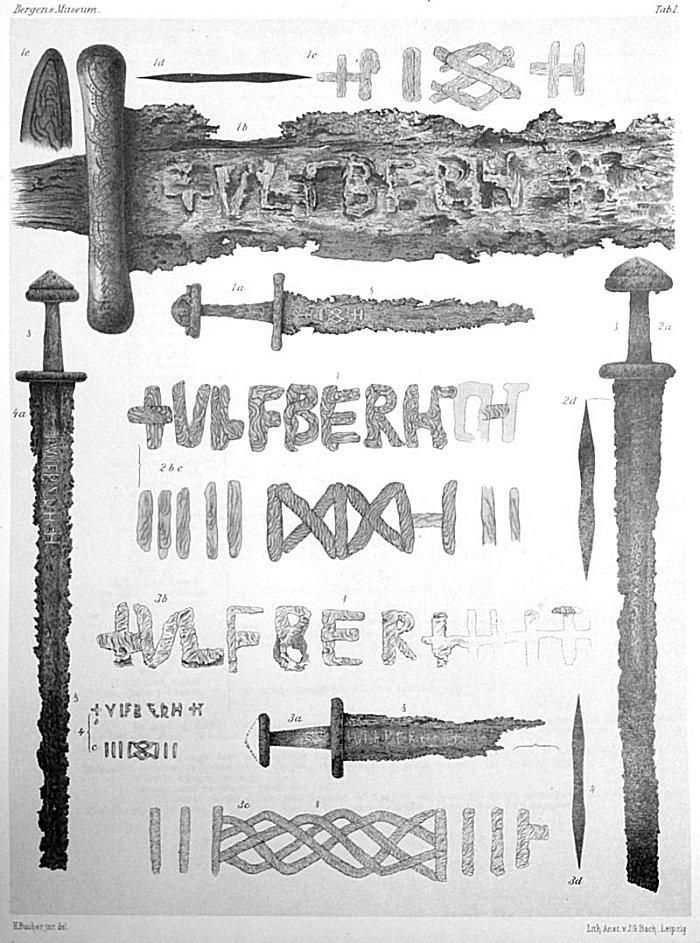
Four Ulfberht swords found in Norway (drawings from Lorange 1889). Credits: wikipedia
Archaeologists have discovered that damaged Viking swords were often repaired. Several surviving swords have blades that were broken in two and then welded back together and returned to use. The loss of a sword was a catastrophe for a Viking.
Credit: Adobe Stock - alex_marina
Swords held an extraordinary place in the Norse Sagas and the everyday existence of the Vikings. Scholars have discovered approximately 100 uniquely named swords deeply embedded in Norse mythology. Among these, Tyrfing and Gram stand out as two renowned magical swords, each with its own fascinating tale in the rich tapestry of Norse mythology.
The Norse legend of hero Sigmund and the magical sword in the Branstock tree mentioned in the Sigurdsaga that is part of the Volsunga Saga (Völsunga Saga) show why swords were believed to have such unusual properties.
Updated on March 6, 2024
Written by Ellen Lloyd – AncientPages.com
Copyright © AncientPages.com All rights reserved. This material may not be published, broadcast, rewritten or redistributed in whole or part without the express written permission of AncientPages.com
Expand for references
More From Ancient Pages
-
 Aboriginals Inhabited South Australia 29,000 Years Ago – New Study
Archaeology | Jul 15, 2020
Aboriginals Inhabited South Australia 29,000 Years Ago – New Study
Archaeology | Jul 15, 2020 -
 Archaeologists Encounter A 1,500-Year-Old Mystery In Kent, UK
Archaeology | Mar 16, 2022
Archaeologists Encounter A 1,500-Year-Old Mystery In Kent, UK
Archaeology | Mar 16, 2022 -
 Ancient Wooden Sculpture Unearthed In Peru’s Chan Chan
Archaeology | Jul 12, 2022
Ancient Wooden Sculpture Unearthed In Peru’s Chan Chan
Archaeology | Jul 12, 2022 -
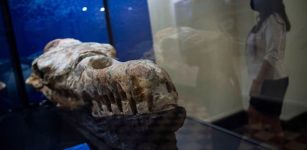 Huge 36-Million-Year-Old Skull Of Fearsome Marine Monster Discovered In Peru
Fossils | Mar 21, 2022
Huge 36-Million-Year-Old Skull Of Fearsome Marine Monster Discovered In Peru
Fossils | Mar 21, 2022 -
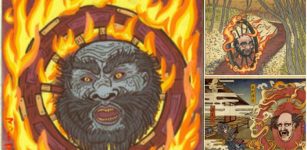 Wanyūdō The Soultaker – Fearsome Yōkai In Japanese Mythology
Featured Stories | Nov 22, 2017
Wanyūdō The Soultaker – Fearsome Yōkai In Japanese Mythology
Featured Stories | Nov 22, 2017 -
 Jade Emperor – Supreme Ruler Of Heaven In Chinese Mythology
Chinese Mythology | Feb 21, 2019
Jade Emperor – Supreme Ruler Of Heaven In Chinese Mythology
Chinese Mythology | Feb 21, 2019 -
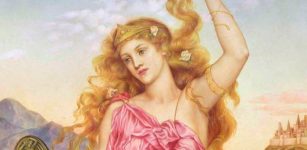 Mythical Helen Of Troy: Beautiful Wife Of King Menelaus Of Sparta
Featured Stories | Jul 5, 2019
Mythical Helen Of Troy: Beautiful Wife Of King Menelaus Of Sparta
Featured Stories | Jul 5, 2019 -
 5th-Century Tomb With Finds Of Historical And Artistic Value Discovered In Eastern Bohemia
Archaeology | Mar 8, 2021
5th-Century Tomb With Finds Of Historical And Artistic Value Discovered In Eastern Bohemia
Archaeology | Mar 8, 2021 -
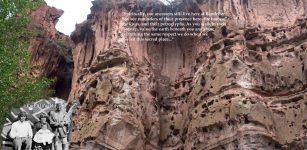 Bandelier National Monument: Unusual Ancient Ruins Of Pueblo People In The Southwest
Civilizations | Jun 30, 2016
Bandelier National Monument: Unusual Ancient Ruins Of Pueblo People In The Southwest
Civilizations | Jun 30, 2016 -
 Has The Mystery Of The Hobbits Finally Been Solved?
Archaeology | Apr 21, 2017
Has The Mystery Of The Hobbits Finally Been Solved?
Archaeology | Apr 21, 2017 -
 The Ebers Papyrus – Most Famous Plant Medicine ‘Encyclopedia’ Of Ancient Egypt
Civilizations | Feb 3, 2016
The Ebers Papyrus – Most Famous Plant Medicine ‘Encyclopedia’ Of Ancient Egypt
Civilizations | Feb 3, 2016 -
 Impressive Gaulcross Hoard Reveals Secrets Of Mysterious Picts
News | Jun 20, 2016
Impressive Gaulcross Hoard Reveals Secrets Of Mysterious Picts
News | Jun 20, 2016 -
 Proteus: Prophetic Greek Sea God Who Knew All Things, Past, Present And Future
Featured Stories | Aug 30, 2025
Proteus: Prophetic Greek Sea God Who Knew All Things, Past, Present And Future
Featured Stories | Aug 30, 2025 -
 Incredible 500,000-Year-Old ‘Paradise’ With Thousands of Artifacts Discovered In Israel
Archaeology | Jan 24, 2018
Incredible 500,000-Year-Old ‘Paradise’ With Thousands of Artifacts Discovered In Israel
Archaeology | Jan 24, 2018 -
 Ancient City Of Knossos – A Cosmopolitan Hub Of The Minoan Civilization And Culture
Civilizations | Jan 8, 2016
Ancient City Of Knossos – A Cosmopolitan Hub Of The Minoan Civilization And Culture
Civilizations | Jan 8, 2016 -
 Ördög – Shapeshifting Demon Who Controls The Evil And Dark Forces In The World
Featured Stories | Oct 23, 2019
Ördög – Shapeshifting Demon Who Controls The Evil And Dark Forces In The World
Featured Stories | Oct 23, 2019 -
 Lacandon People’s Last Stronghold – Lost Maya City Of Sak-Bahlan Found In The Mexican Jungle
Archaeology | Aug 25, 2025
Lacandon People’s Last Stronghold – Lost Maya City Of Sak-Bahlan Found In The Mexican Jungle
Archaeology | Aug 25, 2025 -
 New Hope To Finally Find Tomb Of Alexander The Great
Archaeology | Mar 6, 2019
New Hope To Finally Find Tomb Of Alexander The Great
Archaeology | Mar 6, 2019 -
 Secret Dwelling Place Of Reptilian And Dragon-Like Creatures In Europe
Ancient Mysteries | Jul 18, 2018
Secret Dwelling Place Of Reptilian And Dragon-Like Creatures In Europe
Ancient Mysteries | Jul 18, 2018 -
 Scotland’s Oldest Tartan On Display For The First Time!
Artifacts | Apr 6, 2023
Scotland’s Oldest Tartan On Display For The First Time!
Artifacts | Apr 6, 2023



